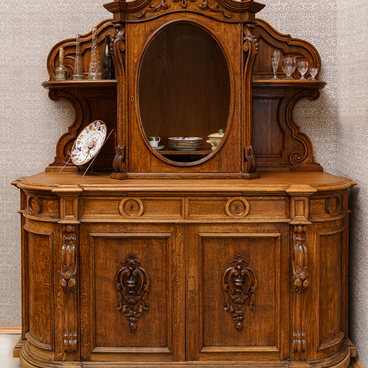A piano is a keyboard instrument that produces sound by striking strings with hammers. The main design feature of a piano is the vertical arrangement of strings and hammers, which allows for a compact and streamlined design. This makes it easy to fit a piano into a relatively small space.
Compared to other musical instruments, the piano stands out for its unique musical qualities. These include a wide range of tones, even timbre across the register, and the ability to produce multiple sounds simultaneously. Additionally, the piano has the capability to imitate the sound of other instruments, all of which contribute to its widespread popularity.
The piano on display at the Rybinsk Museum was produced by the C. M. Schröder Company, one of the leading manufacturers in the Russian Empire at the time. Founded in the early 19th century by Johann Friedrich Schröder, this company was granted the title “Supplier to His Imperial Majesty’s Court” in 1880.
Schröder instruments are characterized by their high quality, durability, and reliability. According to the Great Russian Encyclopedia, “Expert musicians praised the representability and elegance of this company’s pianos, as well as the even touch and the remarkably full and melodious tone of their instruments. For these reasons, Schröder pianos were appreciated by amateur musicians. They were also favored by renowned musicians such as Anton Rubinstein, Franz Liszt, Josef Hofmann, Eugen d’Albert and many others.
This piano has two pedals. The body is made of polished wood and painted black. The edge of the top cover is decorated with a profiled border, and the side edges of the keyboard feature bars with chiseled grooves. Openwork brass flaps with brackets in the form of elegant branches are attached to the side panels. Metal bowls are fixed inside them. In the past, these bowls held candles. Under the music stand, there is the manufacturer’s brand. A similar logo is on the iron frame of the instrument, and next to it is the item’s serial number. Inside the body, on the cast iron bronzed frame, there is a large relief of the coat of arms of the Russian Empire painted with multicolored enamel. For easier mobility, the piano is mounted on four wheels.






